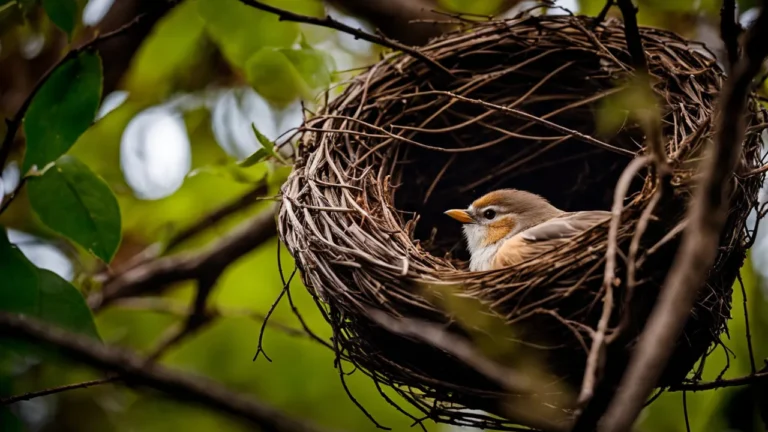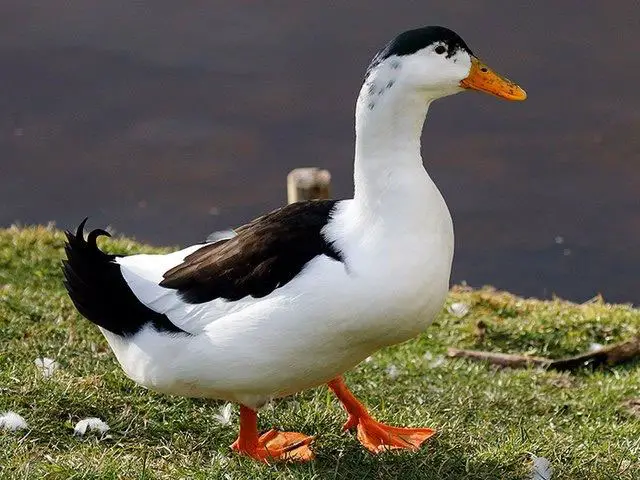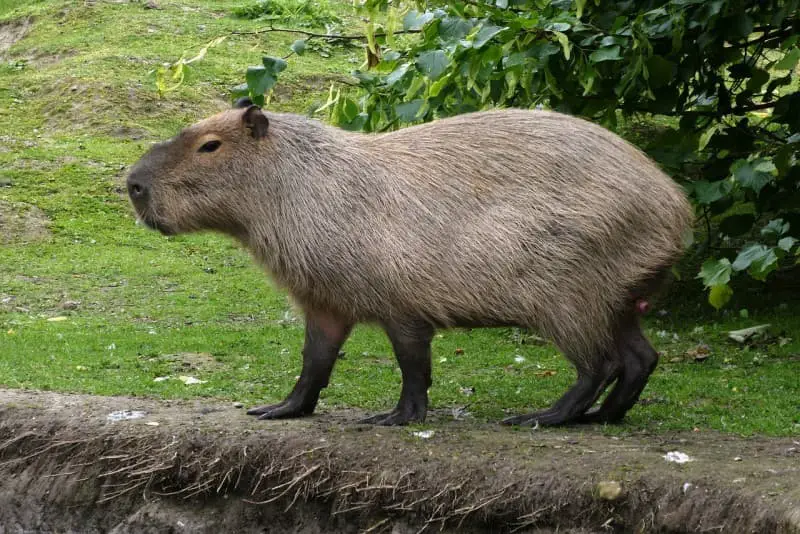You’re not alone if you’ve ever questioned if birds really spend the night in their nests. When evening falls, a lot of people find themselves staring into shrubs and trees, wondering where our feathery companions go to sleep.
For those with limited time, the following is a brief response to your inquiry: While most birds do spend the night sleeping in their nests, their sleep cycles vary greatly from those of humans.
Like humans, birds have circadian rhythms.
Birds have circadian rhythms, much as people do. This implies that the natural cycle of day and night controls their sleep and waking cycles. Nonetheless, various bird species might range significantly in the duration and kind of their naps.
Sleep Duration and Type Vary by Species
Some birds sleep all night in their nests, while others take little naps or even fall asleep while perched on a limb. Birds’ needs for sleep vary as well, according on things like size, metabolism, and environment.
Larger birds, such as eagles and owls, for example, may sleep for up to 12 hours per day. Conversely, smaller birds, such as hummingbirds or sparrows, could only sleep for four to eight hours a day.
Furthermore, the season might have an impact on migrating birds’ sleep habits. Birds often sleep less and relax less during migration to save energy for lengthy flights.
A few birds even fall asleep in midair!
It may surprise you to learn that some birds may fall asleep while in the air. For instance, it’s been observed that the common swift may fall asleep while soaring. These birds can rest while still being able to fly because they can lock their wings in a certain posture.
They can sleep and save energy thanks to this amazing adaption, which helps them travel great distances during migration. The idea of birds getting some Z’s while they fly across the sky is quite exciting!
Thus, the next time you see a bird sitting on a limb or inside its nest, keep in mind that it’s not just sleeping; rather, it’s adhering to its own particular sleep cycles that are determined by its species and innate desires.
To get further knowledge on the sleeping habits and behavior of birds, go to https://www.audubon.org/news/why-do-birds-sleep-nests.
Why Nest-Dwelling Birds Sleep
Ever wonder why birds sleep in their nests? It turns out that birds opt to take a nap in their comfortable little houses for a variety of reasons. Let’s examine a few of the primary causes of birds’ preference to spend the night in their nests.
For Safety and Coverage
Birds sleep in their nests primarily for the purpose of shelter and protection. Birds may rest safely and securely in their nests, away from any predators. Predators find it more difficult to detect birds and their eggs while they are nesting because of the complex structure of the nest.
In addition, birds may see possible dangers from a higher vantage point inside a nest.
To Save Heat
Birds sleep in their nests in order to save heat. Nests are often constructed in a manner that aids in body heat retention, particularly on chilly evenings. Birds make their nests comfortable and warm by fluffing up their feathers and nestling inside of them.
For birds that reside in colder regions or during the winter, when temperatures may drop dramatically, this is especially crucial.
To Remain Near Eggs and Chicks
Nest-dwelling birds use their nests as a place to be close to and safeguard their eggs or young. Parent birds are able to monitor their young and remain close to them in case of emergencies or threats by sleeping in the nest.
Because of their close closeness, their young can be fed and protected quickly, increasing their chances of survival and well-being.
The next time you see birds nesting, keep in mind that they make this strategic decision to provide warmth, cover, and security for themselves and their young rather than merely sleeping in nests for convenience.
How these feathery critters have evolved to make such amazing houses is very interesting!
Not Every Bird Sleeps in a Nest
Not all birds use their nests as places to sleep, despite common perception. Although nests are often thought of as places where birds rest and raise their young, several species have other sleeping arrangements. Let’s investigate a few of these amazing sleeping patterns of birds.
Certain Birds Nest in Cliffs or Trees
Certain birds will rather perch on cliffs or tree branches than create nests. They locate ideal places where they may sleep and relax in comfort. Species like owls and several songbird species are known to exhibit this behavior.
To keep predators away from them while they sleep, these birds often choose safe havens. It’s incredible to consider how they manage to stay balanced on a branch or precipice all night long!
A Seabird’s Potential Sleeping Position on the Water
Seabirds have peculiar sleeping patterns because they have adapted to their maritime surroundings. Numerous seabird species, including petrels and albatrosses, have the ability to sleep while floating on the water. They settle down to slumber, tucking their heads behind their wings.
They are able to save energy and protect themselves from any predators as a result. Imagining these birds resting soundly while swaying with the waves is amazing!
Even while nests are undoubtedly vital to birds, it’s interesting to see how different species have evolved to have varied sleeping patterns. Birds have evolved clever techniques to guarantee a restful night’s sleep, such as resting while floating on water or roosting on trees or cliffs.
Common Backyard Birds’ Sleeping Patterns: Cardinals
Because they are diurnal birds, cardinals are active throughout the day and rest during the night. They usually seek for a cozy location to rest in trees or plants. To be warm and safe as they sleep, cardinals are known to puff up their feathers and hide their heads under their wings.
Male cardinals may sing gently at night to mark their territory during the mating season.
Chickadees
Small songbirds called chickadees are active during the day and hibernate at night. Typically, they sleep in nest boxes or tree cavities. During chilly evenings, chickadees possess a special aptitude that allows them to reduce their body temperature and save energy as they sleep.
To remain warm, they often gather in groups, which makes for a comfortable and secure resting habitat.
Robins
Although robins are nocturnal avians, they may spend the night in their nests to safeguard their young or eggs during the mating season. Nonetheless, robins usually sleep in trees or bushes after the mating season is over.
In the winter, they may also congregate in large group roosts where they cuddle together for protection and warmth.
Sprouts
Birds of prey that spend the day sleeping are sparrows. They often take a nap in thick foliage, bushes, or trees. Certain types of sparrows, such as the house sparrow, have been known to spend the night in man-made buildings, such as cracks in buildings or birdhouses.
Large flocks of sparrows frequently sleep together to protect one another from predators.
The Woodpeckers
Although woodpeckers are nocturnal birds, they may spend the night in their nests when the mating season is underway. The usual places for woodpeckers to sleep during the non-breeding season are tree cavities or cracks. They have a safe and secure area to relax thanks to these cavities.
Strong claws and tail feathers enable woodpeckers to securely cling to tree sides throughout the night.
It’s crucial to remember that different birds have different sleeping patterns based on their species, geographic region, and season. Birds’ habits and lives may be fascinatingly revealed via observations of them in their natural environments.
Final Thoughts
As you can see, the majority of birds spend the night in their nests. However, sleeping habits and nest-building techniques may differ greatly across species. We can get a fascinating glimpse into the everyday life of birds by knowing where and how they sleep.
The following morning as you hear a chorus of birdsong, see them waking up after a restful night’s sleep, snugly tucked up in their nests.


![Are Dinosaurs Birds Or Reptiles? [Explained]](https://birdsology.com/wp-content/uploads/2024/01/14628.webp-600x400.webp)


